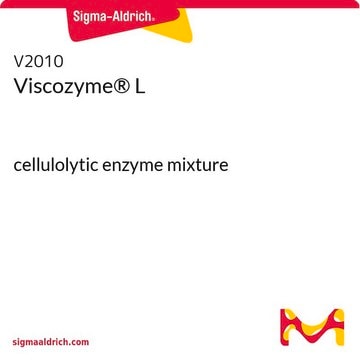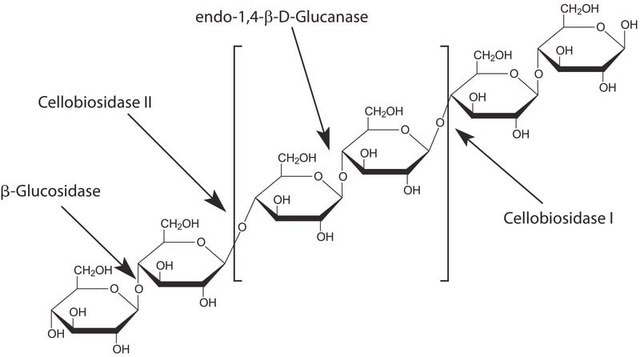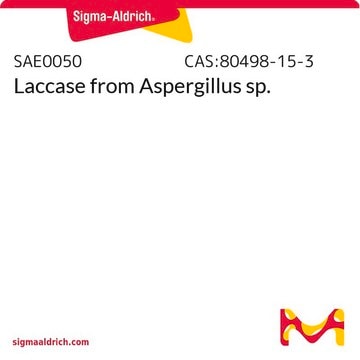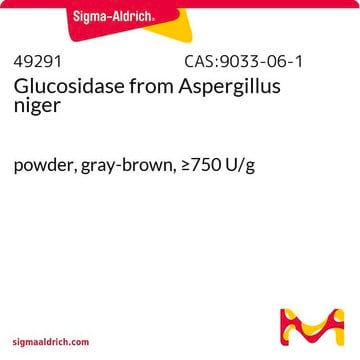C2730
Cellulase from Trichoderma reesei
aqueous solution, ≥700 units/g
Synonym(s):
Celluclast®, Celluclast® 1.5L
About This Item
Recommended Products
biological source
fungus (Trichoderma reesei)
form
aqueous solution
specific activity
≥700 units/g
mol wt
68 kDa
greener alternative product characteristics
Waste Prevention
Design for Energy Efficiency
Learn more about the Principles of Green Chemistry.
sustainability
Greener Alternative Product
density
1.10-1.30 g/mL
greener alternative category
storage temp.
2-8°C
Looking for similar products? Visit Product Comparison Guide
General description
Cellulase from Trichoderma reesei is produced by submerged fermentation of a selected strain of the fungus Trichoderma reesei and catalyzes the breakdown of cellulose into glucose, cellobiose, and higher glucose polymers. It corresponds to a molecular mass of 68 kDa with optimum pH and temperature of 6 and 52° C, respectively.
Application
- for aqueous extraction of oil from corn germ
- in the enzymatic hydrolysis of Sweet Sorghum Bagasse (SSB)
- in the enzymatic digestion of paper grids
Biochem/physiol Actions
Legal Information
Signal Word
Danger
Hazard Statements
Precautionary Statements
Hazard Classifications
Resp. Sens. 1
Storage Class Code
10 - Combustible liquids
WGK
WGK 1
Flash Point(F)
Not applicable
Flash Point(C)
Not applicable
Personal Protective Equipment
Certificates of Analysis (COA)
Search for Certificates of Analysis (COA) by entering the products Lot/Batch Number. Lot and Batch Numbers can be found on a product’s label following the words ‘Lot’ or ‘Batch’.
Already Own This Product?
Find documentation for the products that you have recently purchased in the Document Library.
Customers Also Viewed
Our team of scientists has experience in all areas of research including Life Science, Material Science, Chemical Synthesis, Chromatography, Analytical and many others.
Contact Technical Service










